Hey guys,
I recently received a crown upgrade 400mw green laser from O-like. Shipping was super fast even with regular mail (not DHL or EMS) - Susie sent the laser out Monday July 16th and it got to me in Ohio exactly a week later on Monday the 23rd. Not bad.
First impressions: the laser is very bright. The beam can be seen in a well-lit room and is fairly bright outside at night, but not mind-blowingly so. Divergence seems decent, although it's definitely not as good as the Power Rock 100mw that a friend of mine owns. I'm quite sure that the laser is brighter than the Power Rock, but without an LPM I'm unable to test exactly by how much.
That said, I have a couple questions regarding the laser. Although I know this has been asked a few times before, is there any way I might be able to estimate the power of this laser without an LPM, and without having another green laser handy for comparison (my friend with the 100mw won't be around for a few months)? The only other laser I currently own is a 2.5W 445nm Yob build which I must say is incredibly bright and burns like the best of them. Big props to Yobresal for building such a little monster. I'm pretty sure that comparing my new greenie to the 2.5W would be a highly inaccurate way to estimate its power though... just fyi, the Yob build seems considerably brighter.
Lastly, I've noticed that my laser is relatively inconsistent power-wise. About 1-2 seconds after the laser turns on, it dims considerably - the power appears to get quite a bit weaker than it was in the beginning - and then gets brighter again after a couple seconds. The problem is, the laser never really stabilizes. The longest I've kept it on is roughly a minute, and the power is constantly fluctuating throughout this time period. I took a look at the unfocused dot through my glasses and noticed considerable mode hopping that continues well passed typical "warm up" time. I understand that cheap high-powered greenies are not expected to be very stable, but mine seems particularly bad. I'm currently using the stock battery in the laser, and will consider trying to grab an IMR as recommended in a previous thread to see if that alleviates the problem. Not so sure that it will though.
I've attached a few pictures of the laser along with a couple of my Yob build and a video of the mode hopping. Any help would be appreciated in determining if this laser is up-to-spec or if I it might be worth going through the hassles to try to get a replacement.
:thanks:
video: http://www.youtube.com/watch?v=M-D61PODhwQ&feature=youtu.be
FYI this was filmed on maybe 3/4 filled batteries. I'd been using the laser for roughly the last 10 minutes or so so it was slightly "warmed up."
I recently received a crown upgrade 400mw green laser from O-like. Shipping was super fast even with regular mail (not DHL or EMS) - Susie sent the laser out Monday July 16th and it got to me in Ohio exactly a week later on Monday the 23rd. Not bad.
First impressions: the laser is very bright. The beam can be seen in a well-lit room and is fairly bright outside at night, but not mind-blowingly so. Divergence seems decent, although it's definitely not as good as the Power Rock 100mw that a friend of mine owns. I'm quite sure that the laser is brighter than the Power Rock, but without an LPM I'm unable to test exactly by how much.
That said, I have a couple questions regarding the laser. Although I know this has been asked a few times before, is there any way I might be able to estimate the power of this laser without an LPM, and without having another green laser handy for comparison (my friend with the 100mw won't be around for a few months)? The only other laser I currently own is a 2.5W 445nm Yob build which I must say is incredibly bright and burns like the best of them. Big props to Yobresal for building such a little monster. I'm pretty sure that comparing my new greenie to the 2.5W would be a highly inaccurate way to estimate its power though... just fyi, the Yob build seems considerably brighter.
Lastly, I've noticed that my laser is relatively inconsistent power-wise. About 1-2 seconds after the laser turns on, it dims considerably - the power appears to get quite a bit weaker than it was in the beginning - and then gets brighter again after a couple seconds. The problem is, the laser never really stabilizes. The longest I've kept it on is roughly a minute, and the power is constantly fluctuating throughout this time period. I took a look at the unfocused dot through my glasses and noticed considerable mode hopping that continues well passed typical "warm up" time. I understand that cheap high-powered greenies are not expected to be very stable, but mine seems particularly bad. I'm currently using the stock battery in the laser, and will consider trying to grab an IMR as recommended in a previous thread to see if that alleviates the problem. Not so sure that it will though.
I've attached a few pictures of the laser along with a couple of my Yob build and a video of the mode hopping. Any help would be appreciated in determining if this laser is up-to-spec or if I it might be worth going through the hassles to try to get a replacement.
:thanks:
video: http://www.youtube.com/watch?v=M-D61PODhwQ&feature=youtu.be
FYI this was filmed on maybe 3/4 filled batteries. I'd been using the laser for roughly the last 10 minutes or so so it was slightly "warmed up."
Attachments
-
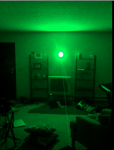 Screen shot 2012-07-25 at 7.48.42 PM.png273.5 KB · Views: 196
Screen shot 2012-07-25 at 7.48.42 PM.png273.5 KB · Views: 196 -
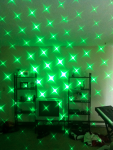 Screen shot 2012-07-25 at 7.48.55 PM.png404.7 KB · Views: 195
Screen shot 2012-07-25 at 7.48.55 PM.png404.7 KB · Views: 195 -
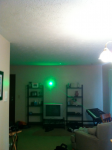 Screen shot 2012-07-25 at 7.49.45 PM.png326.4 KB · Views: 182
Screen shot 2012-07-25 at 7.49.45 PM.png326.4 KB · Views: 182 -
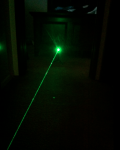 Screen shot 2012-07-25 at 7.49.05 PM.png270.6 KB · Views: 197
Screen shot 2012-07-25 at 7.49.05 PM.png270.6 KB · Views: 197 -
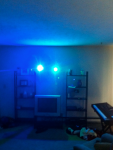 Screen shot 2012-07-25 at 7.49.14 PM.png327.9 KB · Views: 198
Screen shot 2012-07-25 at 7.49.14 PM.png327.9 KB · Views: 198 -
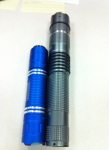 Screen shot 2012-07-25 at 7.49.21 PM.png313.4 KB · Views: 215
Screen shot 2012-07-25 at 7.49.21 PM.png313.4 KB · Views: 215 -
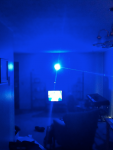 Screen shot 2012-07-25 at 7.50.20 PM.png268 KB · Views: 190
Screen shot 2012-07-25 at 7.50.20 PM.png268 KB · Views: 190
Last edited:





